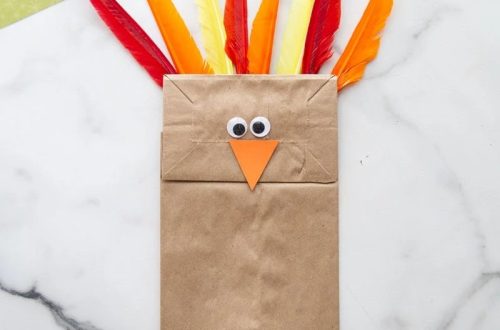Part 1: The Importance of Learning Through Play
1. Cognitive Development:
Play is essential for a 3-year-old’s cognitive development. Through play, children can explore their environment, problem-solve, and practice decision-making skills. Educational toys can help stimulate their minds and encourage them to think critically, enhancing their cognitive abilities.
2. Social and Emotional Development:
Playing with others can help children develop crucial social and emotional skills. Educational toys that promote cooperative play can teach 3-year-olds about sharing, taking turns, and working as part of a team. These toys can also help children understand and manage their emotions, such as frustration and disappointment, in a safe and controlled environment.

Part 2: Engaging Educational Toys for 3-Year-Olds
1. Building Blocks:
Building blocks are an iconic and timeless educational toy that offers an array of benefits for children’s development. These versatile toys provide endless opportunities for creative play, serving as a valuable tool for learning and skill-building. As children engage with building blocks, they have the chance to explore concepts such as shapes, colors, and spatial awareness, allowing them to develop a deeper understanding of these fundamental concepts. Hands-on interaction with blocks also supports the refinement of fine motor skills as children grasp, stack, and manipulate the pieces, contributing to the advancement of their dexterity and coordination.
Moreover, building blocks facilitate open-ended play, empowering children to unleash their creativity and imagination. By encouraging children to build, stack, and design their own structures, these toys promote a sense of autonomy and self-expression, nurturing a child’s ability to think independently and explore their ideas. This free-form play also fosters problem-solving abilities, as children experiment and overcome challenges while working with blocks, facilitating the development of critical thinking skills and spatial reasoning.
2. Puzzles:
Puzzles offer 3-year-olds a valuable opportunity to enhance their cognitive skills. Whether it’s a basic wooden puzzle or a more intricate jigsaw, these toys can aid in advancing a child’s hand-eye coordination, shape recognition, and focus. The satisfaction of completing a puzzle also contributes to a boost in a child’s self-esteem. The process of figuring out how pieces fit together builds problem-solving abilities, while the visual and tactile experience promotes sensory development. Additionally, as children become engrossed in the task, puzzles can also support the development of patience and persistence. Overall, puzzles serve as an engaging and effective tool for fostering various essential skills in 3-year-olds, making them a highly beneficial addition to a child’s educational toy collection.

Part 3: Educational Toys for Physical Development
1. Ride-On Toys:
Ride-on toys, like tricycles and balance bikes, play a pivotal role in enhancing the physical development of 3-year-olds. These toys offer children the opportunity to bolster their balance, coordination, and strength while partaking in enjoyable physical activity. By engaging with ride-on toys, kids not only gain vital motor skills but also experience a sense of independence and liberty as they master the art of navigation and movement control. These toys encourage children to stay active and provide a positive environment for physical growth and development. Moreover, ride-on toys serve as a source of both exercise and amusement, promoting a healthy and active lifestyle from an early age. Ultimately, these toys contribute significantly to the holistic development of 3-year-olds, making them a valuable addition to a child’s playtime activities.
2. Outdoor Play Equipment:
Introducing 3-year-olds to outdoor play equipment, such as swing sets or climbing structures, offers numerous benefits that contribute to their overall growth and development. Engaging in outdoor play encourages physical activity and exploration, providing children with opportunities to move and exert energy. These experiences aid in the development of gross motor skills, allowing children to build strength, coordination, and balance as they navigate the playground equipment. Furthermore, outdoor play equipment promotes the development of endurance and fine-tunes motor control, fostering physical capabilities that are essential for various activities and sports as they grow older.
In addition to physical development, outdoor play fosters sensory experiences and enhances a child’s connection to nature. The sights, sounds, and textures present in an outdoor environment stimulate a child’s senses, providing valuable sensory input. Exposure to natural elements, such as feeling the wind against their skin, hearing the sounds of birds chirping, or smelling the fresh air, supports a child’s sensory development and encourages them to explore and engage with the world around them.
Furthermore, outdoor play offers a necessary break from indoor activities and screen time, promoting a healthy and active lifestyle that is essential for a child’s overall well-being. The freedom and space provided by outdoor play equipment allow children to engage in imaginative and unstructured play, fostering creativity and independence. It also offers opportunities for social interaction and cooperative play, as children engage with their peers, further nurturing their social and emotional development.

Part 4: Educational Toys for Language and Literacy Skills
1. Storybooks and Pretend Play:
Engaging 3-year-olds in storybooks and pretend play can play a crucial role in the development of their language and literacy skills. Reading together not only fosters a love for books but also aids in developing vocabulary, comprehension, and communication skills. As children listen to stories and engage in discussions about the plot, characters, and settings, they are exposed to new words and concepts, increasing their language proficiency. Furthermore, the act of reading together also promotes bonding and emotional connection between the child and the reader, encouraging positive associations with learning and literacy.
Pretend play, particularly with educational toys such as dress-up costumes and playsets based on familiar stories, further enhances a child’s language and literacy development. Through imaginative play, children have the opportunity to express themselves, experiment with different roles, and engage in storytelling. This process encourages creativity, as children reenact scenes from stories, come up with their own narratives, and explore the use of language in a playful context.
Moreover, these activities help children make connections between the stories they read and their real-life experiences, fostering a deeper understanding of narrative structure and character development. As children play out different scenarios, they exercise their imagination and develop a love for storytelling and literature. This early exposure to language and literature can lay a strong foundation for a child’s future literacy skills and instill a lifelong passion for reading and learning.
2. Alphabet and Number Games:
Educational toys designed to introduce letters and numbers can play a significant role in laying the groundwork for 3-year-olds’ literacy and numeracy skills. Whether it’s through letter blocks, number puzzles, or matching games, these toys facilitate a playful approach to learning the alphabet and counting, making the educational process enjoyable and engaging. By integrating these fundamental concepts into their playtime, children can effectively absorb and comprehend early literacy and numeracy skills in an interactive and enjoyable manner. These toys not only provide exposure to letters and numbers but also enhance cognitive abilities such as problem-solving, pattern recognition, and memory retention. Additionally, the positive and stimulating experiences offered by these toys create a strong foundation for future academic progression, fostering a passion for learning and setting the stage for a child’s ongoing intellectual development.
In conclusion, educational toys play a crucial role in a 3-year-old’s development by providing opportunities for learning through play. From cognitive and social development to physical and language skills, the right toys can help children grow and thrive in various areas. When choosing educational toys for 3-year-olds, it’s important to consider their developmental needs and interests to provide them with a well-rounded and enriching play experience.




